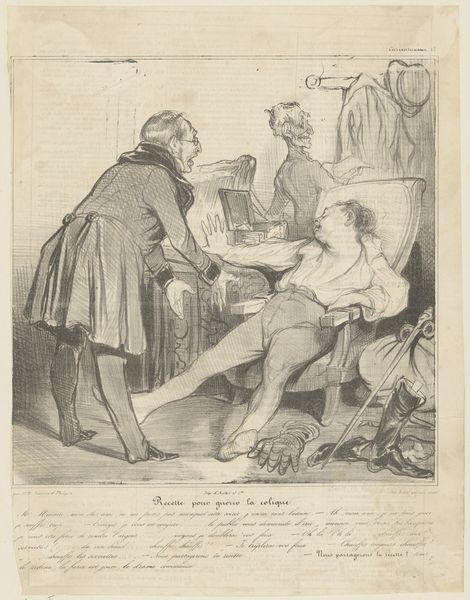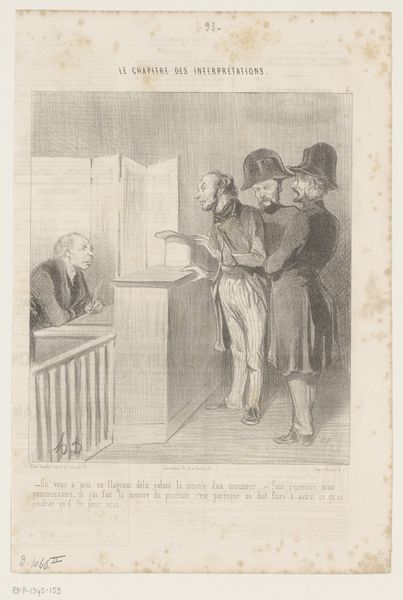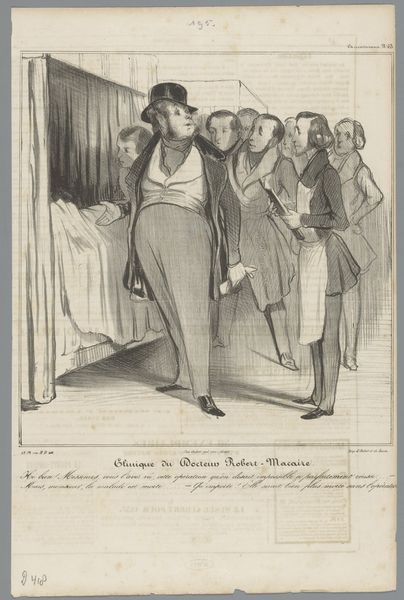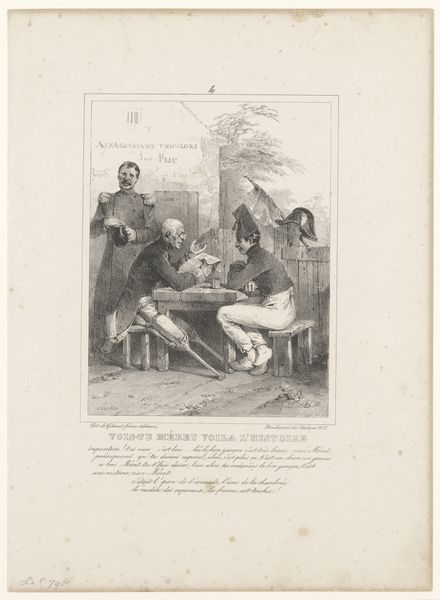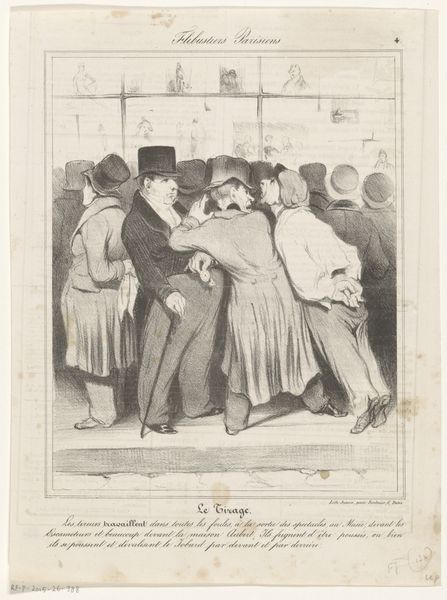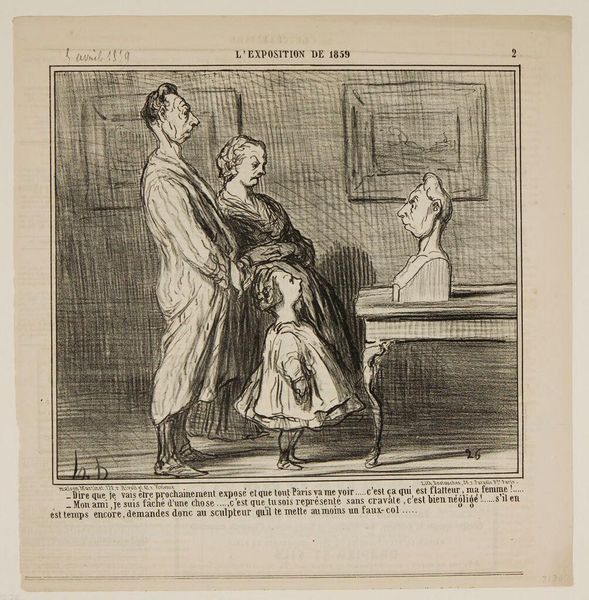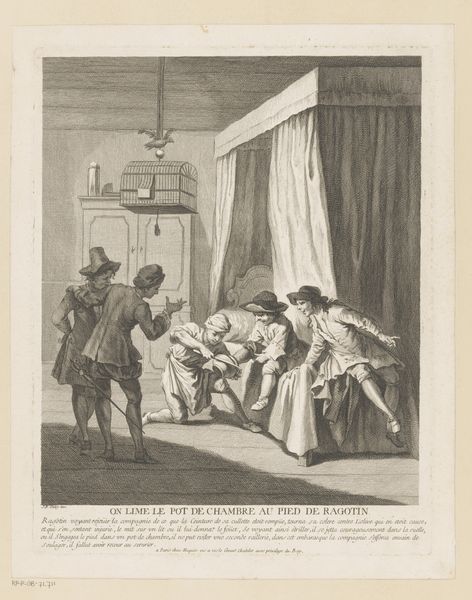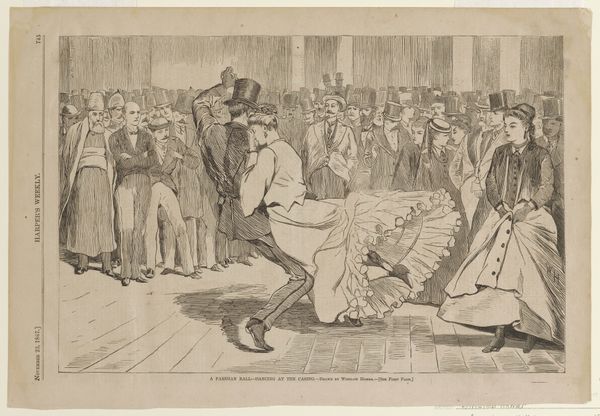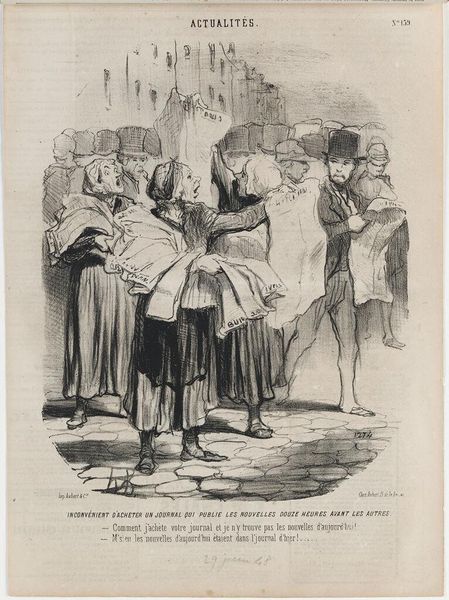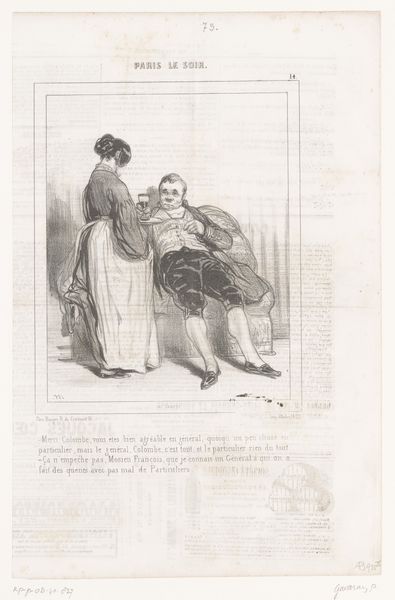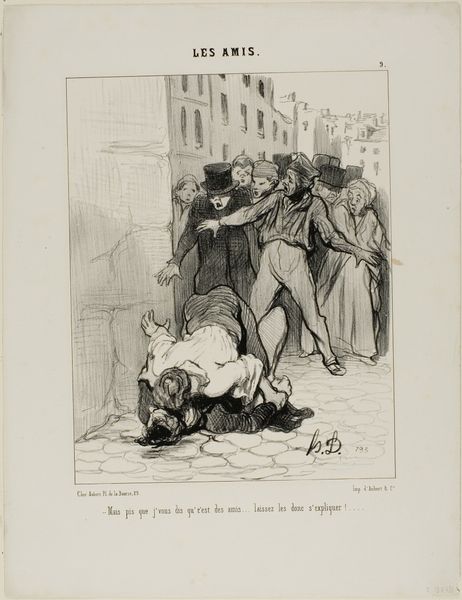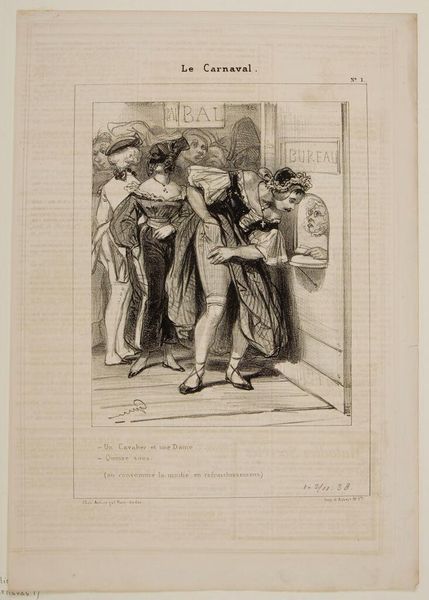
lithograph, print
#
narrative-art
#
lithograph
# print
#
french
#
caricature
#
figuration
#
romanticism
#
line
#
genre-painting
Dimensions: height 331 mm, width 243 mm
Copyright: Rijks Museum: Open Domain
Curator: Allow me to introduce Honore Daumier's 1838 lithograph, "Robert Macaire magnetiseert Bertrand, vermomd als oude vrouw," currently residing in the Rijksmuseum collection. Editor: What a striking composition! There’s an almost immediate sense of theater and charlatanism just in the gestures of the figures and the stark linearity of the sketch. Curator: Indeed. The piece is from Daumier's Robert Macaire series, which served as biting social commentary during the July Monarchy in France. The series skewers the era's rampant corruption, and particularly the rise of a new bourgeoisie hungry for status. Editor: Right, Macaire, as a character, became a potent symbol for unchecked ambition and the era's dubious get-rich-quick schemes. You see that played out clearly in the manufacturing and distribution of prints like this. How easily were such critiques disseminated among the public? Was this mass-produced, almost "craft" object of resistance also reinforcing the structures it critiqued through its own circulation? Curator: An insightful point. The means of distribution also speak to a broader audience that would come to realize how deeply rooted exploitation was in French society, further revealed with each circulation of Daumier's prints. Moreover, you can sense the weight of social norms in Macaire’s actions that continue to burden society today. I believe his disguise exposes that deeply unsettling paradox between how older women are often viewed versus their immense potential. Editor: Interesting observation. His sharp gestures aimed towards the disguised Bertram and the seated, captive audience, emphasize the theatrical nature of their labor and exploitation. And notice the relatively inexpensive materials of printmaking, the ready availability of lithography at the time... it suggests a deliberately accessible form meant to infiltrate daily life. Curator: The print also touches upon themes of gender and deception within that capitalist framework. How women navigate—or are forced to navigate—within these structures also becomes critically apparent. This makes us re-examine inherited perceptions, and perhaps challenge these constructs entirely. Editor: Well, it is striking to consider how the artwork challenges high art by examining labor, materiality, and its context of consumption in mid-19th century France. Curator: Precisely. It offers us a glimpse into how power dynamics shape not just society, but our perceptions of ourselves and one another. Editor: Daumier’s work seems just as potent, and uncomfortably familiar, today as it must have been back then.
Comments
No comments
Be the first to comment and join the conversation on the ultimate creative platform.
